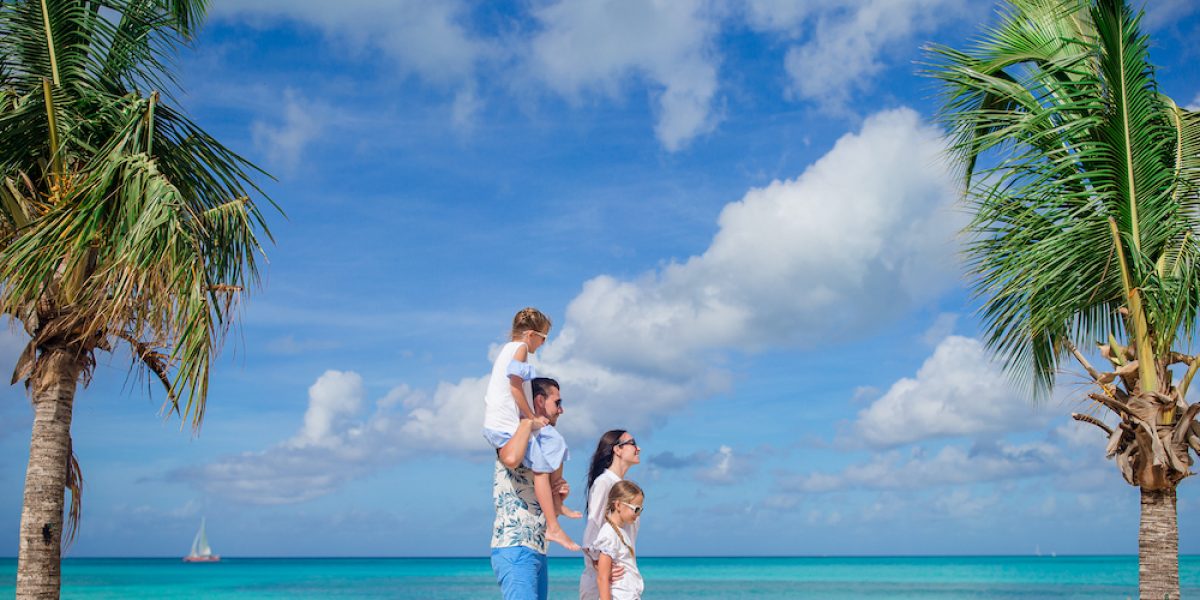Kia Orana! Welcome to the Cook Islands
If you’re an intrepid European traveller who thinks they’ve ‘done it all’, the Cook Islands is guaranteed to reignite your passion for adventure.
As far away as you can get from Europe before you start coming back again, this South Pacific collection of 15 islands is a picture postcard paradise of white sand beaches, azure seas, verdant mountains and 13,000 kindly souls, the bulk of whom live on the main island, Rarotonga, which also acts as the hub for connections on to the other islands. And with direct flights from New Zealand, Australia, Hawaii and Tahiti, paradise can be reached with just one stop along the way from several major European cities – which also opens up the prospect of two far flung vacations in one!
Named after the famed 18th Century British explorer, Captain Cook, who twice visited the islands, today they exist in a state of quasi-statehood of their own choice that sees them in ‘Free Association’ with New Zealand. Essentially, this means they exercise autonomy on all matters save for foreign affairs, defence and security, in respect of which they may call on the assistance of their larger neighbour over 3000km to the southwest. In return the Cook Islands commits to uphold shared values and principles such as good governance and human rights. It is a marriage that has worked very well for almost 60 years since the British relinquished control and represents an example for other Small Island Developing States (SIDS) of how to tread that fine path between independence and dependence in optimum fashion.
The hybrid British/New Zealand history means English is one of the Cook Islands’ national languages, and so, since you’re reading this, you’ll have zero problem making yourself understood to the locals. That said, for all the Western influences, the Cook Islands’ Polynesian heritage is woven into the fabric of society and treasured as an integral part of present-day customs, ceremonies, festivals and thinking. This places community and family at the heart of everything, such that visitors will be bowled over by the warmest of welcomes extended everywhere they venture.
As to bilateral relations with the EU, these are good, and marked by especially close dialogue around matters pertaining to climate change, oceans and human rights. In addition, the Cook Islands has preferential access to the EU for many of its exports, while the EU promotes trade and private sector development via its Pacific Regional Integration Support Programme (PRISE).
While heavily dependent on tourism to drive its GDP, which is one of the highest in the Pacific region, many Cook Islanders work in agriculture, harvesting black pearls, copra (from which coconut oil is extracted) and citrus fruit for export. Fisheries also feature as a mainstay of the economy as does international financial services, where the Cook Islands has transcended its remoteness and taken advantage of the now ubiquitous virtual economy to become a leader in asset protection for those across the globe seeking a safe haven for their wealth.
For all arrivals, sensitive and discreet infrastructural development means the natural world remains firmly in the ascendant. For those staying on Rarotonga, travel options on-island are focused on the road that rings the island, with clockwise and anti-clockwise bus services or hiring a car or bike offering up a range of options to circumnavigate at a pace and manner of one’s choosing. Alternatively, those with the stamina can venture into Rarotonga’s rugged mountainous interior on foot for the ultimate tropical hiking experience.
Island hopping can be done either by scheduled flights or private air charter, or alternatively via a cruise or by chartering a yacht. This brings within one’s orbit the farther-flung smaller Cook Islands such as Aitutaki with its incredible turquoise lagoon, or Atiu, famed for its eco resorts and beloved of bird watchers.
Divers and snorkelers meanwhile are spoilt for choice anywhere across the Cook Islands, which offers access to some of the most awesome marine life you’ll see anywhere in the world. If clownfish, pufferfish, rays octopus, turtles, sharks or whales are your thing, here you can see them all!
Weather-wise April and May or September and October are the most popular months when temperatures and humidity levels are widely considered just right. Between December and April, you’ll have fewer folk to rub shoulders with and will likely be paying less for accommodation but will need to factor in higher temperatures and some unsettled stormy weather at that time of year. All-told, however, the Cook Islands promises an unforgettable and unparalleled experience wherever you put a pin in the calendar.
The Cook Islands motto could be that life is for living. While the islanders are kept grounded by a devout Christian world view, they embrace each day, with traditional dance, food, sport – especially canoeing and rugby – and all manner of festivals featuring at the heart of daily life. Cook Islands cuisine is marked by seafood, tropical fruit, such as papaya and breadfruit, and coconut milk, with food traditionally prepared in an underground earth oven. The national drink, meanwhile, is Tumunu, made using fermented oranges.
A feast for the senses at every turn – the Cook Islands is one of the last remaining true tropical paradises blending the best of the old with the best of the new for a genuinely unique and life-affirming getaway. It is guaranteed to provide sanctuary from the hectic European grind, returning you restored, re-energised and with a renewed zest for life.


